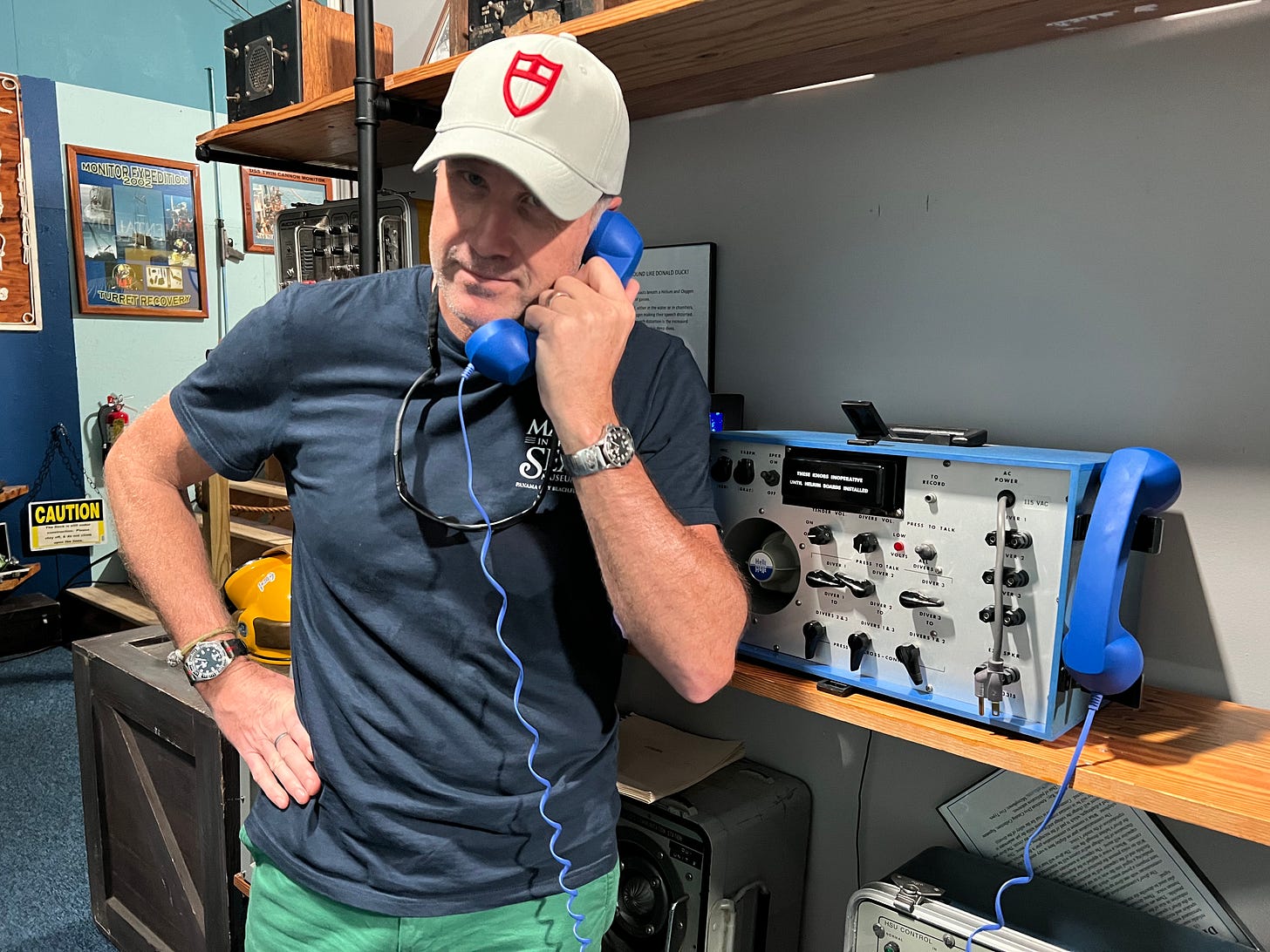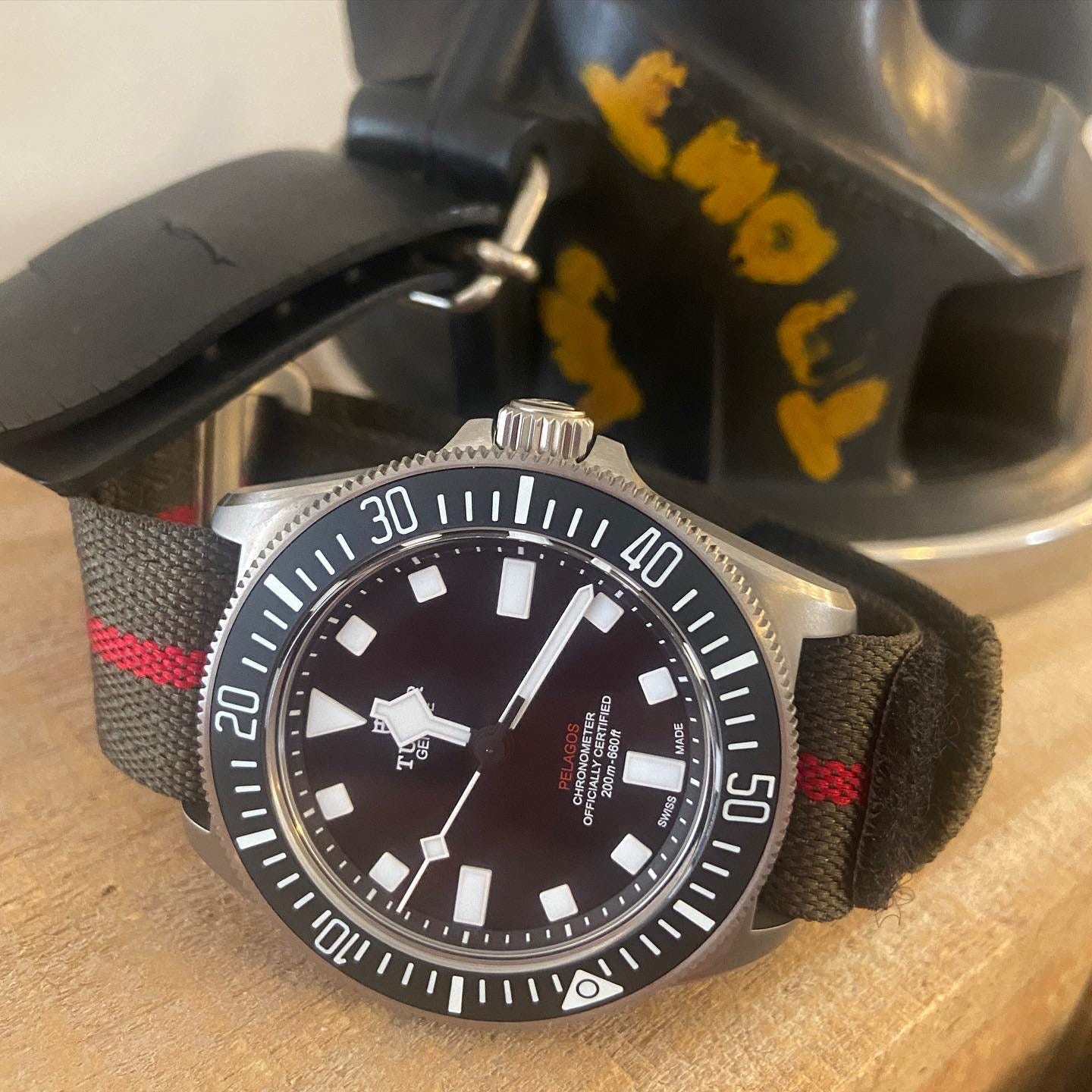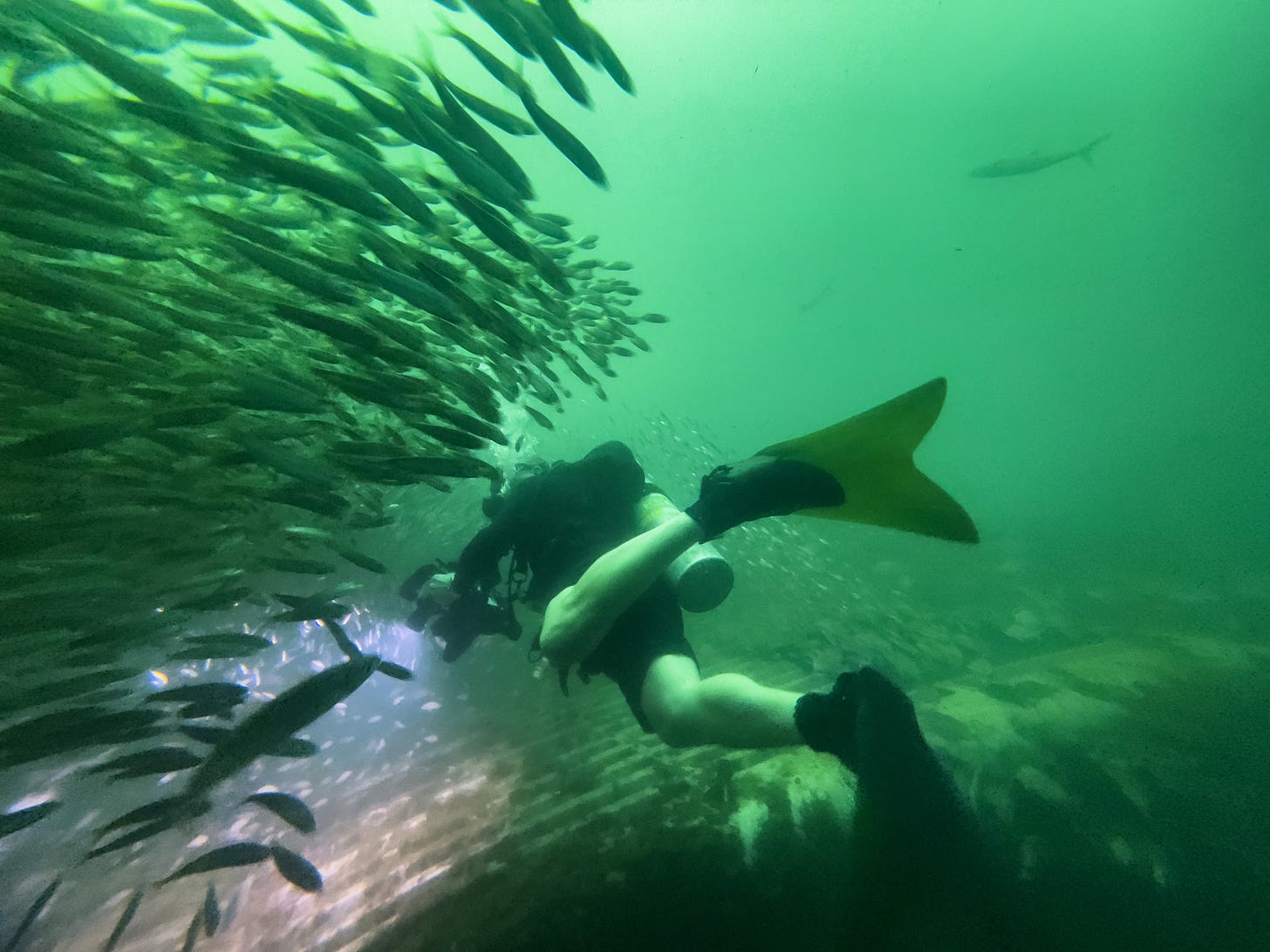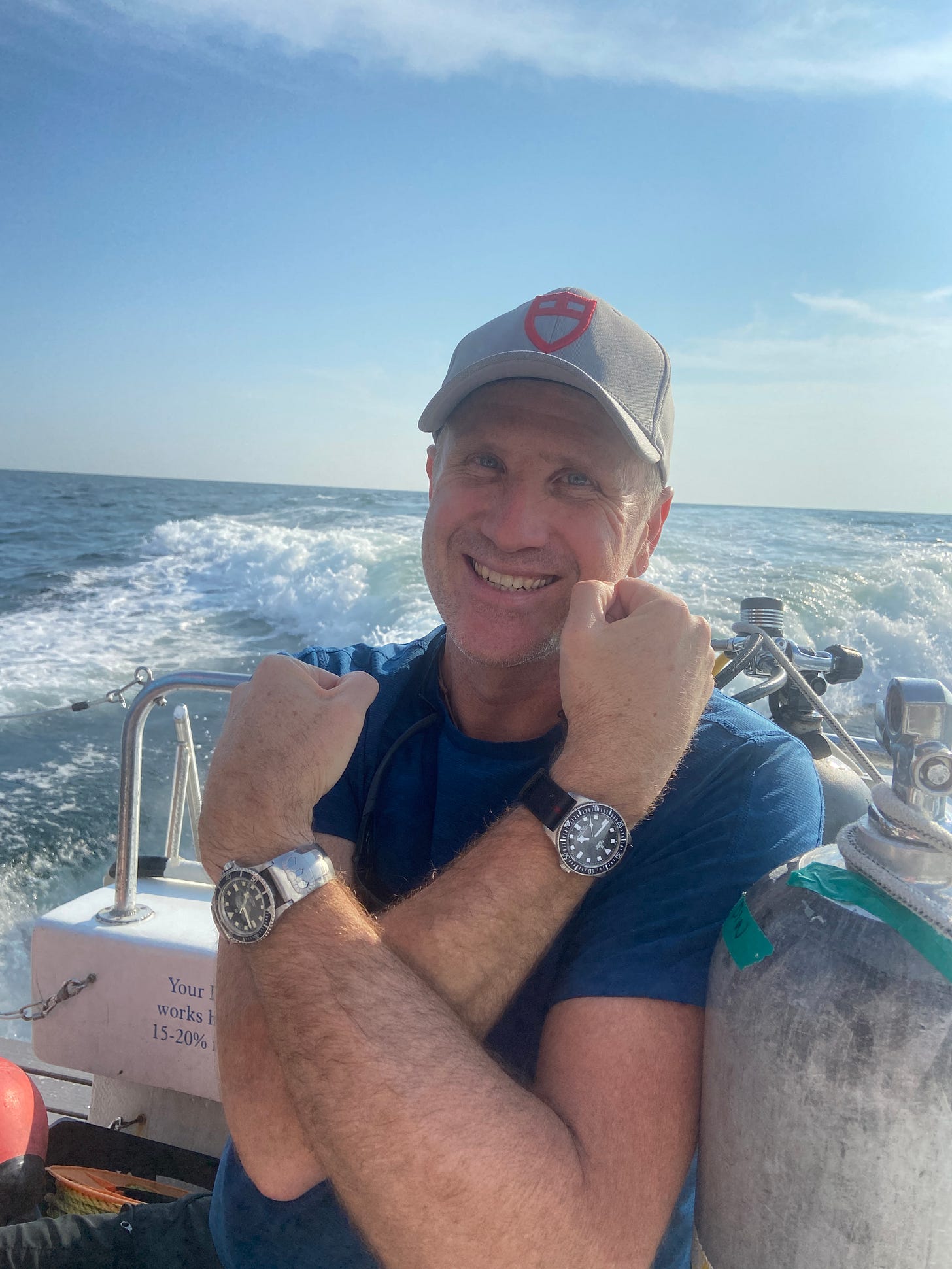As press trips go, this one was pretty special. It wasn’t the most luxurious, or the most exotic, but for a dive and dive watch history nerd, it will be difficult to top. To be fair, I wasn’t even technically invited as “press,” but asked to come along to handle underwater photo duties on a group dive. Tudor was launching a new dive watch, with a clear tie to their history on US Navy divers’ wrists. That was all I knew, but given the location, it wasn’t difficult to figure out the theme and venue. After all, Panama City Beach, Florida is home to the Navy’s Experimental Diving Unit, and the Man in the Sea Museum, home to the decommissioned SEALAB I underwater habitat. Pure catnip or, perhaps to use a more appropriate metaphor, blood in the water, for most of us attending.
What is it about military themed gear, watches and history that is so endlessly fascinating? I’ve been trying to figure that out for a while. I’m an unabashed pacifist, didn’t serve in the military, and haven’t even fired a weapon, yet have a strong appetite for military history, books, movies, and of course watches meant to be worn in anger—CWC, Rolex MilSubs, Blancpain, and on and on. The easy answer is, ripstop, Kevlar, MOLLE, and camo gear often comes with a sort of built-in track record of durability, having been designed and tested for much harder use than I’ll ever subject it to, and I like well made kit. Tales of military exploits and clandestine missions intrigue me, not out of a flag waving patriotism or personal belligerence, but probably some deep seated insecurity, an internal unanswerable question as to whether I could have done the same. Could I have put myself in harm’s way, made a difficult split-second decision, or even dispatch an enemy? To meet those who’ve made that decision for themselves and come out the other side, or made the ultimate sacrifice, intrigues me—the bravery, the commitment, the ability to overcome fear and so on.
Before dinner last Thursday night, feeling heady after an afternoon on a dive boat, I was nursing an IPA and chatting with Brian, a retired US Navy Seabee. He was telling me the most extraordinary tales of building a pier on a remote island in the South Pacific while dodging scorpionfish and scurvy (yes, even in the 1980s), and locking out of a submarine through the torpedo tube, under the ice at the North Pole. He recounted the stories in the same enthusiastic way I might tell someone of diving a wreck in Lake Superior, but with much higher stakes. Earlier that day, pre-dive, I listened to a former commander of the US Navy’s Underwater Demolition Team during the Vietnam War tell of his own experiences, and then a retired navy engineer who casually told me that his deepest dive was to 1,000 feet. It was humbling and inspiring at the same time.

The Man in the Sea Museum should be on the bucket list of anyone interested in diving history. The building is a rather nondescript, windowless structure along a divided highway next to an auto parts store and a Taco Bell. I imagine countless vacationers drive past on this weedy strip of asphalt on Florida’s Panhandle on their way to a beach, a trinket shop, or a resort without having a clue what is inside. But there, in the parking lot, is the massive red painted cylinder —SEALAB I—that once sat on the bottom of the ocean, with brave men living inside, human guinea pigs breathing mixed gas under immense pressure. Inside the museum are diving suits, radio sets, hyperbaric chambers, and a trove of memorabilia from a long history of the Navy’s cutting edge work beneath the waves. One of my favorite exhibits centered on Operation Ivy Bells, the top secret mission to tap Soviet communication cables at the bottom of the Sea of Okhotsk in the early 1970s. It was here that Tudor chose to reveal its latest iteration of the Pelagos FXD, perhaps its most tactical diving watch.
It’s easy to get jaded and glib about modern dive watches. They are as numerous as krill in the ocean, yet worn by so few people for actual subaquatic use. The hyperbolic marketing around them is replete with dramatic images of divers, marine life, and square jawed frogmen with double tanks and double hose regulators. Tudor is no exception to this imagery, yet for some reason, the Pelagos FXD, particularly the black dial version unveiled in Florida last week, cuts through it all for me. Maybe it’s the history of its evolution through military use, or maybe it’s the utter purposefulness of its design, with fixed strap slots, matte titanium case, magnetism-resistant movement, and hyper-legible dial. It’s easy to see a through line from this watch back to the fixed bar, sword-hand Submariner Rolex made for British military divers, and the Tudors worn by the UDT and SEALs in the Vietnam era. As Lt. William Jebb (ret.), the aforementioned UDT man, said during his brief remarks, “to us, a watch was simply a tool, like our K-BAR knife or a compass.” It’s difficult to imagine a $4,100 analog mechanical watch being viewed as such these days, but I’d like to think if it was issued and worn by modern warriors, it would do just fine. A watch like this deserves to be ridden hard and put away wet.
In a nod to the general vibe of the event, I wore my only Tudor watch—a 1976 Submariner, ref. 9401/0, the so-called “Snowflake” version with distinctively angular hands and square hour markers. I mounted it on a wide steel cuff band I had custom made in the Philippines, similar to those bought by Navy divers on shore leave from Vietnam back in the day. Wary of “stolen valor,” when I ordered mine, I avoided the sorts of engravings those guys had on theirs—parachutes, SEAL tridents, etc.—and opted for a simple double tank design and a message engraved inside. I had a feeling I’d see a few similar vintage watches and “Olongapo” bands on display, and I wasn’t wrong. I’ve had this watch several years and taken it scuba diving in the Cayman Islands and freediving in Tenerife and wanted to add another memory to it with this trip. So, for our dive outing, it was firmly clamped on my left wrist, and the Pelagos UDT, er… FXD, on my right. Held side by side, the ancestry was clear.
The dive was a bit of a blur, in a few respects. Further befitting the storyline of the event, our target was a sunken navy landing craft from the 1980s, a 95-foot long hovercraft. Tasked with shooting wrist shots of any diving journalist who wanted one, I splashed in first and descended to the wreck to wait. A good current was running, and the water was a decidedly emerald green hue when I got to the wreck at about 65 feet deep. Not that I saw much of the wreck. The water was teeming with marine life—massive schools of bait fish darted all around in a wall of scales and fins. At times it was disorienting as the wreck disappeared behind them. My goal was to photograph divers, not the wreck, or the fish, in spite of the latters’ efforts. So I hung near the down line from the dive boat, as one by one the divers appeared out of the green. Shooting had its challenges. The current discouraged hovering, but the bigger issue was focusing on people and not fish. The camera’s autofocus hunted and misfired dozens of times, filling my memory card with blurry images of fish. I finally managed to photograph everyone and after the last of the other divers ascended, I too made my way back to the surface.
Sometimes diving, like other activities, is less about what you see and more about with whom you do it. The boat was full of friends, some who are probably reading this right now, and others who listen to The Grey NATO podcast, people with whom I have had distant relationships over email or social media. To don a mask and breathe compressed air at depth with them made the experience richer and forged deeper bonds. There were also some young journalists I met for the first time who are writing for some of the same publications I used to, moving the notion of “writing about diving with watches” forward. When I started doing it a decade ago, there really wasn’t anyone else. Now there’s a literal boatload. As a bit of an old lion, to look around the dive boat at 15 divers all taking a new Tudor underwater filled me with great satisfaction. I like to consider the baton passed.
Home and dry, my old Tudor still on my wrist as I type, I’m left with the satisfaction of another successful and rewarding trip in the books. My gear is still drying in the sun, the photos have all been processed and sent, and now my trip report is done. But this shore leave is brief. I leave again on Wednesday, this time for a further destination, a different sea, and more diving—take a breath, get some sleep, then pack and go again. My year underwater continues.









The baton has passed? I'm not so sure Mr. Heaton.
I was listening to episode 47 on my drive to work this morning. Jason had just returned from diving with Sylvia Earle and commented that she was not just diving at age 82, but continuing to explore and adventure.
I fully expect to be listening to some young journalist publishing an interview of 82-year-old Jason Heaton from the deck of a dive boat during a surface interval.
Looking forward to it!
Brilliant, mate!
I am OD Green with envy.
JR